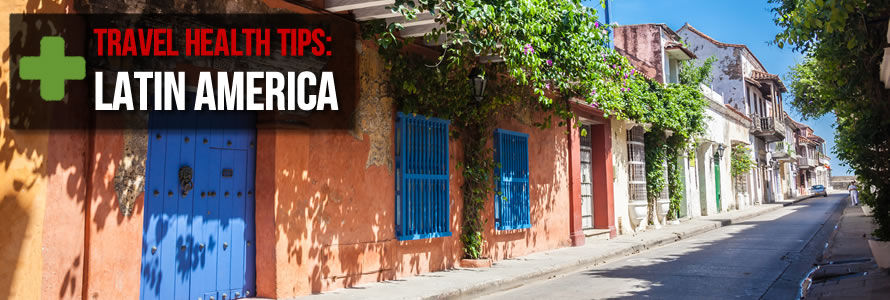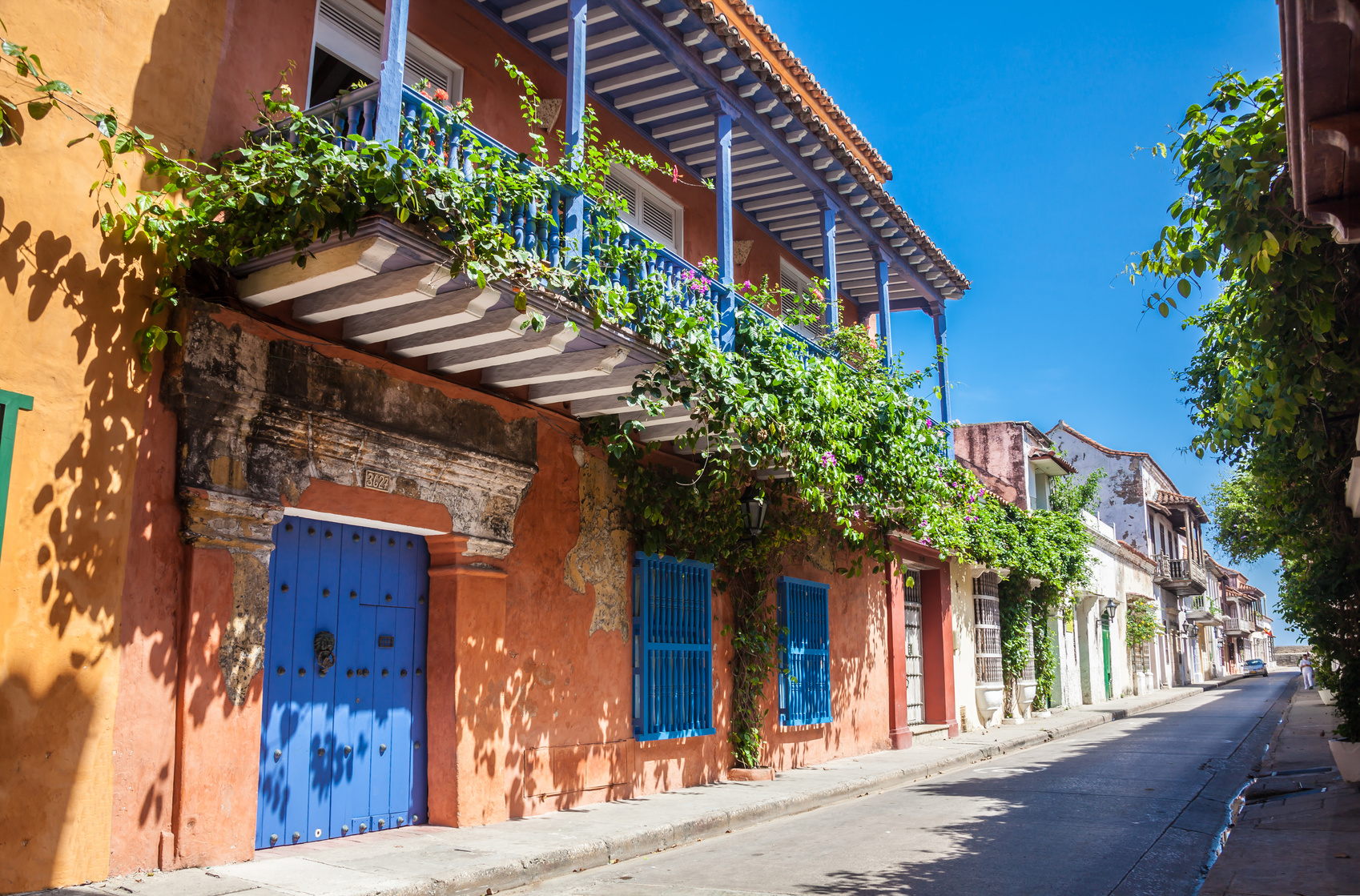The bulk of land which makes up Mexico, Central and South America – known collectively as Latin America – is a vast collection of diverse countries, climates, environments and cultures which means the health considerations while travelling here are also incredibly diverse. There are a few common or recurring themes though which apply and some of what you will need to know is true no matter where you are travelling in the world.
Get Informed
Forewarned is forearmed and knowledge is power etc etc and that is certainly true here. Knowing what the risks are in the country you intend to visit can help you take the best steps for prevention (and we all know prevention is better than cure) or to minimise the risks as much as is humanly possible. There are some great professional and medical expert resources out there which include http://www.fitfortravel.scot.nhs.uk, http://www.traveldoctor.co.uk and www.gov.uk/foreign-travel-advice. These all have detailed and country specific information so do a bit of homework before you set out.
Travel Clinics & Doctors Visits Before Leaving Home
Make an appointment with your doctor or travel clinic at least 8 weeks before your intended departure date. They will advise you what vaccinations or medications are recommended for your destination as well as giving you relevant and/or general health advice. There are several recommended vaccinations which apply to many if not all of the Central and South American countries such as hepatitis A, typhoid and yellow fever.
You will need to allow enough time to undergo certain vaccine courses such as rabies and bear in mind that some or all the vaccinations will cost you – in some cases cost you a lot. It is worth noting here that such things as rabies vaccines (which cost around £60 each and you will need three) are far far less expensive if you get them on arrival in your country of choice.
The Mosquito Issue
Mosquitoes are not just annoying but carry any number of diseases ranging from the unpleasant to the deadly. Many of the mosquito-borne diseases are rife in Latin America and a couple of newbies have recently cropped up. Everyone knows about malaria, which is transmitted by night-flying mosquitoes. Although the malaria risks are higher around the Amazon Basin, typically speaking you will be at greater risk of dengue fever, chikungunya or the Zika virus (which can also be transmitted sexually).
Dengue and chikungunya have very similar symptoms – fever, aching joint, headaches, muscular pain, rash – while Zika is especially dangerous for pregnant women. There are no vaccinations against any of these three at present and there is no cure or treatment. Prevention is all about avoiding the insects by wearing long sleeves and long trousers. However, as these mosquitoes tend to be day-flying that advice is not really practical in a tropical climate so plenty of mosquito repellent is the way to go.
Yellow fever is another mosquito transmitted disease which is of a serious nature and can often be fatal. Several of the South American countries including Brazil, Peru and Colombia and Panama in Central America are deemed to be high risk/endemic zones for yellow fever. The good news is you can be vaccinated against this and it is highly recommended you get it and not just for health reasons. Several countries will not allow entry to anyone coming from a yellow fever risk country unless they have a yellow fever vaccination certificate. The more mosquitoes the higher the risk of getting infected so be extra cautious around water – especially lakes – and following rain (so especially in any rainy season).
Boil it-cook it-peel it-or forget it & Healthy Eating Practices
The boil-it etc mantra is one you will hear over and over again in Latin America with regard to fruit and veg and generally speaking it is good advice. There is of course a line between caution and paranoia though and although it is true that tap water may be inadequate for rinsing and certainly for drinking there are more exceptions to this than you might think. Sanitary conditions vary drastically from country to country in Latin America – many places have equal or even higher standards than those you are used to in your own country. For example in all of the big Nicaraguan cities and much of Costa Rica the tap water is perfectly potable and risk free for drinking (saving you a fortune potentially on bottled water). In countries where you suspect the water is unsafe to drink, you should either drink bottled water or use a water purification method such as a water filter bottle or water purification tablets or drops.
With regard to general hygiene and food – again standards vary considerably from country to country – but generally speaking employ the same practices you would back home but be extra vigilant. For example wash your hands regularly and always after going to the toilet and ensure all food you eat is thoroughly cooked through and piping hot.
There are many diseases transmitted through food contamination. One of the most common and rife in Guatemala is intestinal parasites. Some of these are relatively harmless and quickly expelled by the body while some are serious health risks. Other contaminated food/water risks include hepatitis A, typhoid and diarrhoea.
Travel Insurance
You will hear people say I didn’t take out travel insurance because I never need it and/or it is a waste of money. Not needing it is kind of the whole point and as for it being a waste of money tell that to the hundreds who get caught out every year, facing bills of hundreds of thousands or finding themselves alone and desperate when trouble hits. The single biggest reason to take out travel insurance is to cover you for times of medical emergency. The call is yours of course but adequate travel insurance for long periods is highly competitive now – perhaps less than for a night out on the town. Think about it seriously or risk a world of trouble should you run into difficulties.
Sun Exposure
Much of Central and South America is located within the tropics and the whole of the Southern Hemisphere of which South America is a part has reversed seasons to those in the Northern Hemisphere. That means when it is winter in the Northern Hemisphere it is summer in the Southern Hemisphere. If you have just headed out from a bleak, Northern Hemisphere winter and hit the beaches of Costa Rica all pasty-faced you are going to hit trouble unless you protect yourself well. Sunburn is just one problem but heatstroke can be deadly. Let yourself adjust gradually with sun exposure, wear a hat in the sun and make sure you drink plenty of fluids.
Humidity & Dehydration
Some of the Latin American countries have ridiculously high humidity – Granada in Nicaragua and Cartagena in Colombia are two such examples. Trying to stay hydrated under these conditions can be a battle when you sweat bucket-loads just from the effort of breathing. Be very, very vigilant about your fluid intake and be aware you may need to consider electrolytes or salts to replace depleted body stores.
Altitude Sickness
There are all kinds of adventures to be had and big tourist magnets in high places in Latin America. These include Arequipa, Machu Picchu and Cuzco in Peru, Lake Titicaca (Peru and Bolivia) and La Paz in Bolivia.
Some people seem to get away scot-free with regard to altitude sickness while others seem to be especially prone. Typically speaking, ascents made too rapidly without allowing the body to adjust to lower oxygen levels are what cause the most problem. Mild altitude sickness may just be a slight unpleasant sensation of giddiness and headache through to feeling thoroughly grotty or a sensation that you have seriously overindulged the night before; Acute Mountain Sickness can be life threatening. If you intend to get your head up in the clouds make sure you know how to identify altitude sickness and what to do about it if you should start displaying the symptoms.
There are certain medications said to help with keeping altitude sickness at bay and additionally many of the places you travel to will have all kinds of local and traditional remedies which include chewing leaves from certain plants and teas. They might be worth a try. After all, these people have been going up and down these high places and mountains for centuries.
Take a Destination-specific First Aid Kit
Once you are familiar with all the health risks associated with your Latin American destination you can prepare a travel first aid kit accordingly. Off-the-shelf kits usually contain the basics you’ll need and some other useful items, but may be short on some items you need for your trip to Latin America, you can easily remove items and replace them with more destination specific medical items if necessary. You might think you can rely on some-one else having what you need or a nearby pharmacy but injuries and illness don’t always come in the convenient places where supplies are plentiful. Be prepared like a good traveller.
Medication & Medical Help
Many prescription-only drugs are available over-the-counter in Latin America and there seems to be some handy and general travel law that states 9 out of 10 pharmacists will speak English no matter what far flung corner of the world you are in. They are great for advice and will be familiar with the symptoms of all the most common diseases and illnesses in the region. Should you need to seek medical attention be aware that many countries have both public and private services. Some travel insurance policies don’t cover the insured for private health care so be aware of this when you get any treatment.


